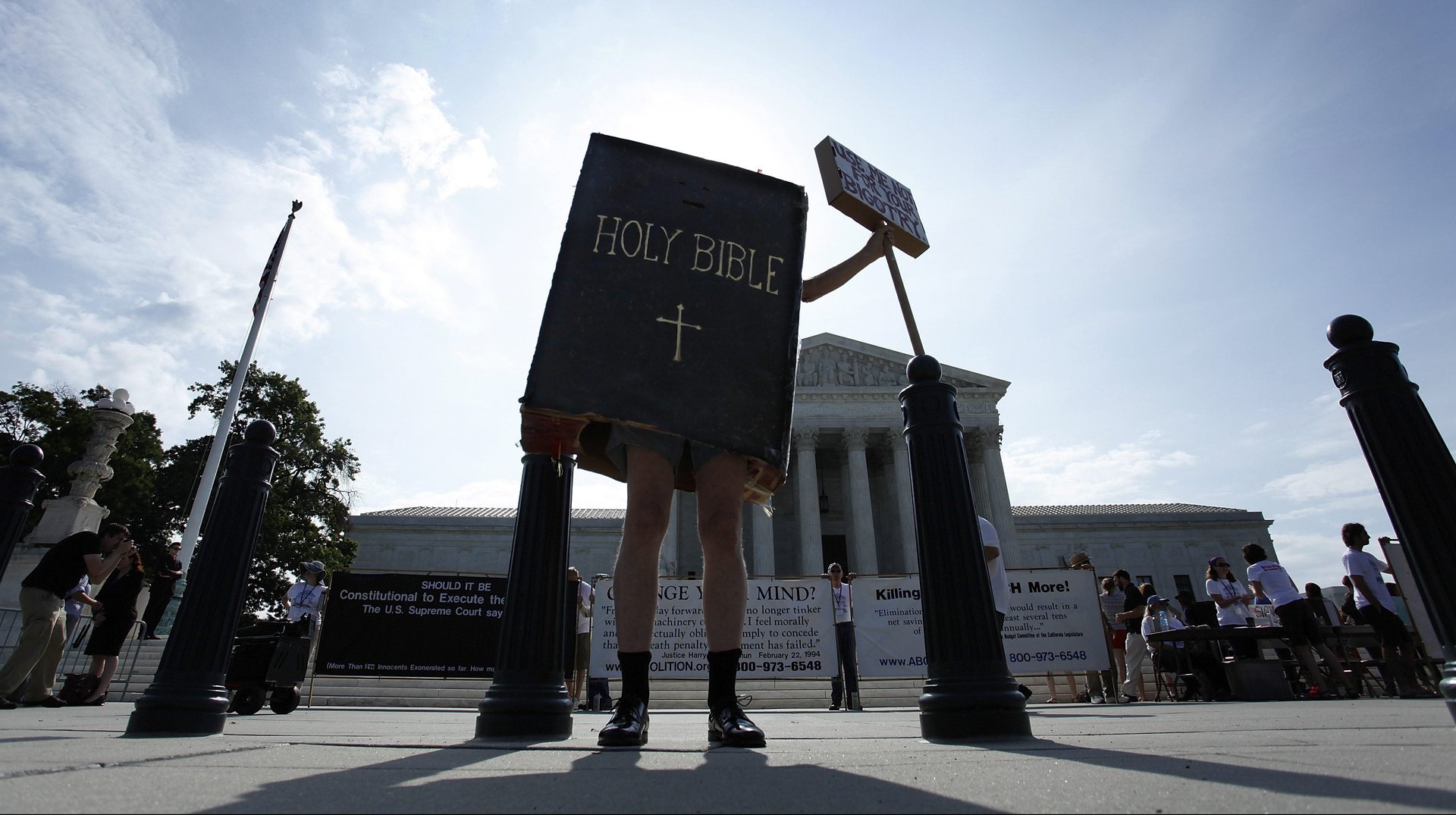The sharpest drops in abortion rates in America have been under Democratic presidents
This article was updated on Oct. 23, 2020.


This article was updated on Oct. 23, 2020.
In the US, abortion is one of the most divisive partisan issues in politics, and deeply entrenched in party ideology. For many voters, their anti-abortion views are what put them firmly in the Republican Party’s camp.
In the past two weeks, the confirmation hearing for Supreme Court justice nominee Amy Coney Barrett was centered around the fight for abortion. Democrats oppose her confirmation because, among other issues, her personal belief and past advocacy might lead her to reverse Roe v Wade, while Republicans support her precisely for the same reasons.
Barrett was of course by president Donald Trump, and his stated opposition to abortion is one reason he has maintained the support of religious conservatives. But people who are against abortion may want to rethink their political alignment, though: during the last three decades, abortion rates have fallen the most under Democrats, and remained flat or at best decreased marginally under Republican administrations.
All of the rates below are the number of abortions per 1,000 women between the ages of 15-44, and come from the US Centers for Disease Control and Prevention (CDC).
Ronald Reagan 1981 – 1989
Abortion rates hovered at 24-23 per every 1,000 women between the ages of 15-44, ending at 24 in 1989.
George H. W. Bush 1989 – 1993
Abortion rates fell from 24 to 23 per every 1,000 women.
Bill Clinton 1993 – 2001
Abortion rates fell from 23 to 16.2 per every 1,000 women.
George W. Bush 2001 – 2009
Abortion rates hovered at about 16 per every 1,000 women for most of Bush’s time in the White House, then dropped from 15.8 in 2008 to 15 in 2009.
Barack Obama 2009 – 2017
Abortion rates plunged from 15 per every 1,000 women in 2009 to 11.6 in 2016, the latest year for which official CDC data is available. The abortion rate is now the lowest on record since 1971, two years before Roe v. Wade established a woman’s right to choose. It is also half the rate in 1991.
As Amy Sullivan, a senior editor at Yahoo news, pointed out, these trends seemed to be a missed opportunity for the Democratic party to reach voters who want to see fewer abortions in the US.
The reason for the trend is simple: access to contraception is more effective in reducing the number of abortions than regulation that controls access—and under Democratic leadership, access to affordable contraception has increased.
The Democratic Party’s platform has emphasized the need to protect women’s reproductive rights, including access to no-cost contraception and funding for organizations like Planned Parenthood that offer family planning services. Under the Obama administration, the contraceptive mandate of the Affordable Care Act (ACA) became effective in 2012, and most health care plans began to cover birth control without co-pays in January 2013. From 2012 to 2013, the abortion rate dropped 5% from 13.2 to 12.5 abortions per 1,000 women.
On the other hand, George W. Bush pushed for funding abstinence-only sex education, and throughout the Obama administration, the Republican Party has consistently attempted to limit the contraception access provided by the ACA. Fear that the Trump administration would repeal the ACA—and with it, access to free birth control—caused women to rush to buy long-acting birth control in the immediate aftermath of the recent election. Trump’s pick for the head of the Department of Health and Human Services, Tom Price, has actively opposed providing women with free birth control.
The numbers prove the Democratic Party’s policies are more likely to limit abortions than those offered by Republicans. Unintended pregnancies account for over 90% of all abortions, according to a 2012 Brookings Institution report. Reducing that number through access to birth control leads to a sharp drop in abortion: according to research from the Guttmacher Institute, the steep drop in abortion rates between 2008 and 2011 was driven by a fall in unintended pregnancies, most likely driven by better contraceptive use.
This was echoed by the conclusion of a recent CDC report: ”Increasing access to and use of contraception, including the most effective methods, can reduce unintended pregnancies and further reduce the number of abortions performed in the United States.”